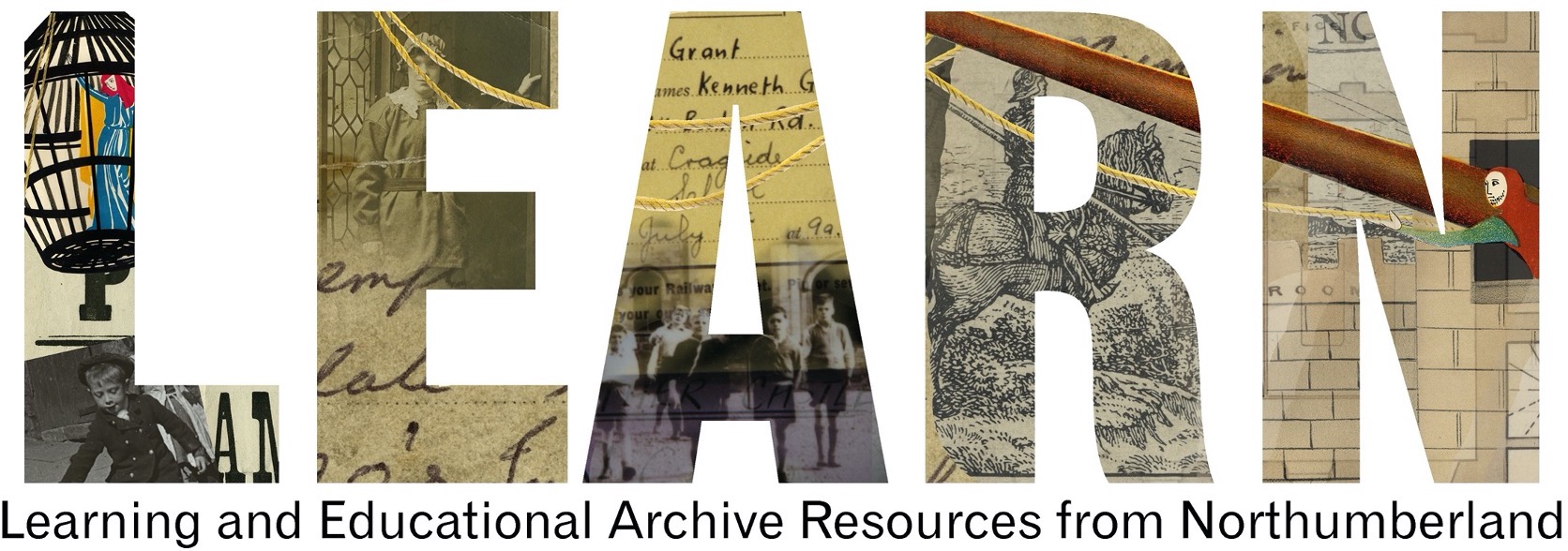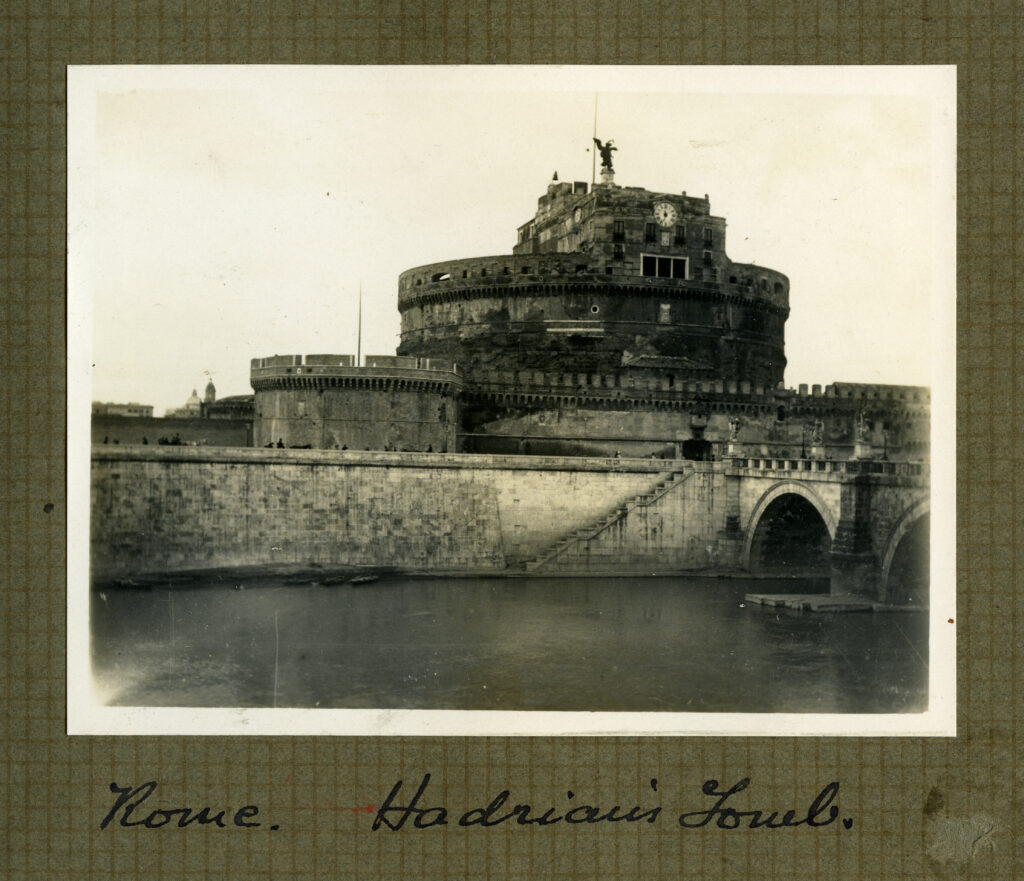Photograph of Hadrian’s Tomb in Rome, 1929
Reference: SANT/PHO/ALB/27/399
Suggested age groups: KS1, KS2, KS3, KS4, Lifelong Learners
Subject areas: History, Literacy, Geography, Art & Design, Politics
CONTEXT
Publius Aelius Hadrianus (AD 76 – 138), known to us as Hadrian, became the ruler of the Roman Empire in AD 117 following the death of Emperor Trajan. He is known as the third of the Five Good Emperors.
Hadrian’s family came from Italica in the Roman province of Hispania Baetica – near present-day Santiponce, Seville in Spain. There is historic debate over whether Hadrian was born in Italica or Rome. After his father’s death in AD 85, he became a ward of the future Emperor Trajan, his father’s cousin.
Prior to Hadrian becoming Emperor, the Roman Empire had been continuously expanding for hundreds of years. As a legatus (general) in the Roman army under Trajan’s rule, Hadrian gained extensive military experience during the conquests of Dacia (Romania) and Parthia (Iraq). The ever-expanding Empire was plagued with rebellions and struggled to hold onto the two new provinces.
Hadrian implemented a policy of security and stability in opposition to those implemented by his predecessors. Rather than continuing to expand the Empire, Hadrian focused on securing the Empire’s existing borders, reviewing his army, and reforming military installations along the frontiers. The grandest scale example of this was the building of Hadrian’s Wall.
Hadrian’s Wall spans 80 Roman miles (73 present day miles or 117 kilometres) from coast to coast across northern England, making it the largest Roman archaeological feature in Britain. It runs from Segedunum in Wallsend on the River Tyne in the east, to Bowness-on-Solway in the west.
The building of the Wall began in AD122. Hadrian’s Wall marked the frontier between Roman Britannia and the unconquered Caledonia to the north and provided a defensive barrier between the two. The Wall provided years of work for thousands of soldiers who were responsible for building, maintaining, and manning it, along with the Milecastles and turrets built along the Wall.
Hadrian’s Wall was completed by AD 128, taking only six years to construct. Hadrian never saw the completed Wall for himself – he left Britannia in AD 122 after commissioning the construction of the Wall and never returned.
Hadrian’s Tomb, also known as Hadrian’s Mole, The Mausoleum of Hadrian and Castel Sant’Angelo, was commissioned by Hadrian as a mausoleum for himself and his family.
The tomb sits on the right bank of the Tiber River in Parco Adriano, Rome. It was constructed between AD 134 – 139. The structure was once the tallest building in Italy. It was designed as a decorative cylindrical building with a garden top and golden quadriga (chariot drawn by four horses).
Hadrian died in AD 138 on the Gulf of Naples. His ashes were interred in the tomb a year later. The remains of succeeding Emperors were also placed here, the last recorded being Caracalla in AD 217.
The tomb was later used as a fortress, a prison, a palace, and most recently a museum.
This photograph comes from an album of images of Hadrian’s Wall and places along the Wall presented by C.J. Young, held by Northumberland Archives.
ROMAN READING LIST
The following books are available at Northumberland Libraries. Click to browse the online catalogue here.
Hadrian and his wall by Paul Frodsham (2013). ISBN: 9780957286030.
Hadrian’s Empire: when Rome ruled the world by Danny Danzinger (2005). ISBN: 0340833602.
Hail! Ancient Romans by Philip Steele (2013). ISBN: 9780750271721.
How would you survive as an Ancient Roman? By Anita Ganeri (2005). ISBN: 074966228X.
Ancient Romans by Daisy Kerr (2000). ISBN: 0749638028.
Museum Mystery Squad and the case of the Roman riddle by Mike Nicholson (2017). ISBN: 9781782503644 .
A Roman journey by Alex Woolf (2003). ISBN: 075023959X.
ACTIVITIES
ACTIVITY 1
Background
Publius Aelius Hadrianus (AD 76 – 138), known to us as Hadrian, became the ruler of the Roman Empire in AD 117 following the death of Emperor Trajan. He is known as the third of the Five Good Emperors.
SEE
See: Who is Emperor Hadrian?
See: When did Hadrian rule the Roman Empire?
See: What role did Hadrian take in the Roman Army?
See: What policies did Hadrian implement as Emperor?
See: What is Hadrian’s Tomb?
THINK
Think: What did Hadrian achieve as Emperor?
Think: Why was Hadrian known as one of the Five Good Emperors?
Think: How did the Roman Empire change while Hadrian was Emperor?
Think: Why did Hadrian decide not to expand the Roman Empire?
Think: What is Hadrian best known for?
Think: Did Hadrian build other frontier walls?
DO
Do: Create a map to show the extent of the Roman Empire when Hadrian became Emperor.
Do: Create a map to show the extent of the Roman Empire at the time of Hadrian’s death.
Do: Mark on your map the geographical changes that Hadrian made during his time as Emperor.
Do: Discuss why Hadrian moved away from expanding the Empire.
Do: Research the Roman’s reactions to Hadrian’s policies.
Do: Imagine you are Roman senators. In groups, have a political debate for and against Hadrian’s policy changes.
Do: Design your own version of Hadrian’s Tomb.
Resources
OTHER ONLINE RESOURCES
Britannica page on Castel Sant’Angelo: https://www.britannica.com/topic/Castel-SantAngelo
Wellesley page on Castel Sant’Angelo: http://omeka.wellesley.edu/piranesi-rome/exhibits/show/mausoleum-of-hadrian–castel-s/introduction
Britannica page on Hadrian: https://www.britannica.com/biography/Hadrian
English Heritage page on Hadrian: https://www.english-heritage.org.uk/visit/places/hadrians-wall/hadrians-wall-history-and-stories/hadrian/
Spartacus page on Hadrian: https://spartacus-educational.com/ROMhadrian.htm


